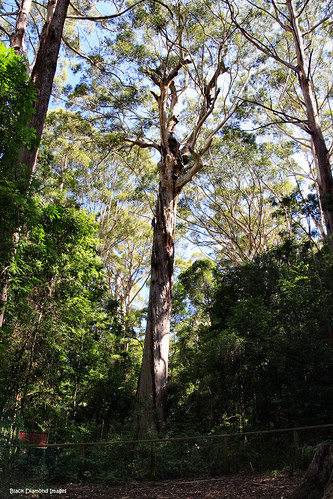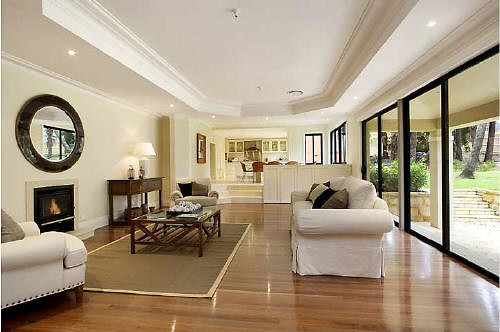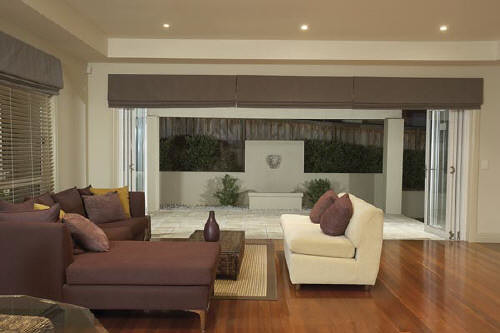Bob's Bloggers
A community of bloggers who live and die to DIY
flooring, wood
Interior Inspiration: Blackbutt Timber Flooring—A Buyer’s Guide
By on Nov 13, 2013
Natural wood flooring always adds class to a property, but with a myriad of woods and finishes to choose from navigating the market can be tricky. There’s no wrong choice... but by making the right one a room can really come alive. For example, dark wood with a vintage finish can invoke historical tones whereas a light wood in the midst of minimalist décor can really give a sense of space.
In terms of the latter look, Blackbutt timber is perennially popular, both for flooring and furniture. You can see it used in the panelling and benches of the Australian parliament for example. It’s most widespread use is still in flooring though and as you can see from the photo below, it really is something special.

Eucalyptus Pilularis in the wild
What is Blackbutt?
Firstly, it’s an odd name isn’t it? It actually comes from the tree’s natural resistance to fires. In the wake of most forest fires the majority of the tree is untouched, but the lower portion of the trunk is stained black. This earned it the name Blackbutt. An odd name but a useful quality for any wood to possess. It’s also known as the Yari — or in botany speak, Eucalyptus Pilularis, so there’s always a backup name if you need it to sound fancy.
The Blackbutt is a Eucalyptus and, in the wild, normally found in swampier areas. It is famed both as Koala food and for making an excellent nesting tree for birds. A large and quick-growing tree, it is found in numerous parts of Australia including Western Australia, Southern Queensland and New South Wales.

Typical Blackbutt flooring
Why Choose Blackbutt?
Laying down a real wooden floor is a big decision and something that needs to be based on more than mere aesthetics. However this is why Blackbutt remains popular — it’s practical as well as pretty.
In addition to the fire resistant properties of the timber, its colour is often more even than similar species, and the wood just as easy to shape. This has made it a firm favorite with woodcutters for over a century, something which has led to the Blackbutt being scarcer in the wild. Rest assured though, today it is largely grown in specialist plantations catering especially to the furniture and flooring sectors. This level of effort put into its production is a testament to how well suited it is for the purpose. For peace of mind, just check that the timber meets the Australian Forestry Standard.
On the topic of production you’ll find that the Australian Blackbutt flooring will normally be supplied in a multilayered, cross-ply format. It is also a wood that reacts well to varnishing, meaning your timber will be scratch-resistant, damp-resistant and easy to clean. The ease with which this wood can be turned into high quality timber is a key factor in its popularity. Whilst primarily used for light space-enhancing flooring, it is equally successful when used for a traditional country farm look too.
Hard Science
Dry Density (kg/m3) = 900
Janka Dry Hardness (kn) = 9.1
Strength Group (dry) = SD2
Tangential %
Naturally Fire Resistant
Naturally Termite Resistant
Naturally Lyctus Resistant

Blackbutt flooring presented in a darker finish - source:
Summary
When rating a timber for use as flooring there are a number of characteristics to evaluate. The Australian Blackbutt shines in them all, making it a common sense investment.
Fire Resistant
One of only seven timbers approved for building use in bushfire areas.
Versatile
Can be stained or polished with ease. Painting can be an issue due to surface check. This is rarely an issue with flooring for obvious reasons.
Durable
As with many hardwoods it will not be prone to warping and is guaranteed to be a long term investment for your property. The exceptional Janka Dry Hardness score is indicative.
Damage Resistant
In addition to its longevity it is naturally resistant to problems like termite, lyctid borer or rots. This is especially true following treatment.
Aesthetics
The even texture and straight parallel grain make it extremely pleasing to the eye and especially suitable for large floorings.
Minimal Disadvantages
The only weak areas of the Blackbutt are when painting or steam shaping, neither of which are common practices with hardwood flooring.
As you can see, Blackbutt makes the ideal choice for high quality wooden flooring exhibiting all the characteristics needed. If you were to invest in a beautiful yet long lasting feature for your property, it would be an excellent place to start.
References
http://www.boral.com/timberflooring/timber_species_-_blackbutt.asp
http://www.fpc.wa.gov.au/content_migration/plantations/species/native_forests/wa_blackbutt.aspx
blog comments powered by Disqus